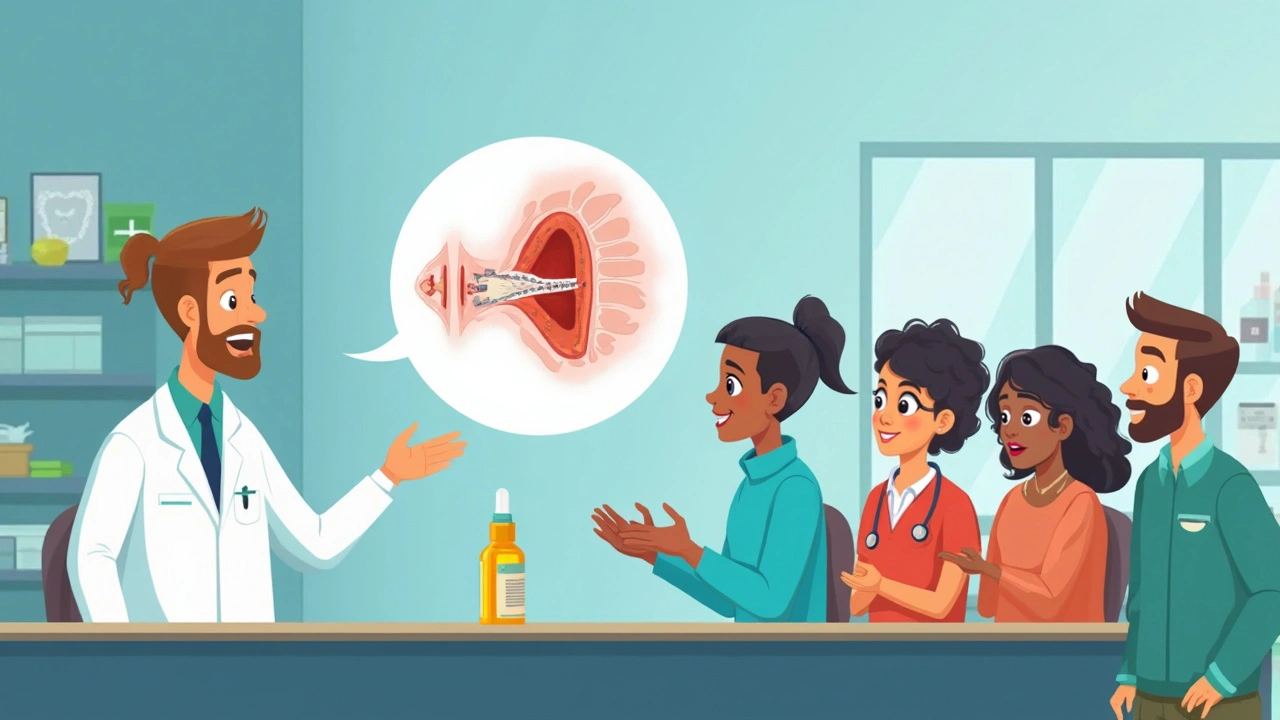Allergies – Simple Help, Symptoms & Treatment Guides
Allergies can turn a nice day into a sneeze‑fest in seconds. Whether it’s pollen, pet dander, or food, the itching, watery eyes, and runny nose feel the same. The good news? You don’t need to suffer in silence. Below are the basics you need to recognize symptoms fast, pick the right over‑the‑counter help, and know when to see a doctor.
Common allergy symptoms and why they happen
When your immune system spots a harmless protein, it releases histamine. Histamine tricks your blood vessels into swelling, makes mucus membranes produce more fluid, and triggers that itchy feeling. Typical signs include:
- Sneezing or a stuffy nose
- Itchy, watery eyes
- Hives or skin rash
- Throat irritation or coughing
- Digestive upset after eating certain foods
If you notice these symptoms every spring, after a pet visit, or after a specific meal, you’re probably dealing with an allergy. Keep a simple log – note the day, what you were doing, and what symptoms appeared. After a week or two you’ll see patterns that point to the trigger.
Quick relief options and where to find them
For most mild to moderate reactions, an antihistamine does the trick. Cetirizine (Zyrtec) is a popular choice because it works fast and usually won’t make you drowsy. Our Buy Generic Zyrtec Online Cheap guide walks you through safe places to get it at a lower price.
If you need longer‑lasting control, especially for seasonal hay fever, consider montelukast (Singulair). It blocks leukotrienes, another chemical that causes swelling. We also have a detailed guide on buying generic Singulair safely online.
For skin‑only reactions, a soothing hydrocortisone cream can calm itching. Apply a thin layer twice a day until the rash eases. And don’t forget nasal saline rinses – they wash out pollen and reduce nasal congestion without medication.
When over‑the‑counter options aren’t enough, it’s time to talk to a doctor. They can prescribe stronger antihistamines, nasal steroids, or allergy shots that desensitize you over time. Mention any prescription meds you’re already using so they can avoid drug interactions.
Here’s a quick checklist you can print and keep on your fridge:
- Identify trigger – use a symptom log.
- Start with an OTC antihistamine like Zyrtec.
- Try saline rinse or hydrocortisone for local relief.
- Consider prescription options if symptoms persist.
- Know when to seek emergency help – trouble breathing, swelling of lips or throat.
Allergy season doesn’t have to ruin your plans. With a simple log, the right meds, and a plan for when things get worse, you’ll stay ahead of the sneezes. Browse our other allergy articles for deeper dives on diet‑related allergies, indoor air quality tips, and how to choose safe online pharmacies for your medication.
Is there a real link between azelastine and tonsillitis? This article breaks down how azelastine works, looks at tonsillitis causes, and explores whether using this allergy spray could make sore throats worse. Dig into tips for safe use, expert insights, and facts that clear up the confusion. Everything you need to know is laid out in plain language, perfect for both allergy sufferers and the always-curious.
Continue reading





